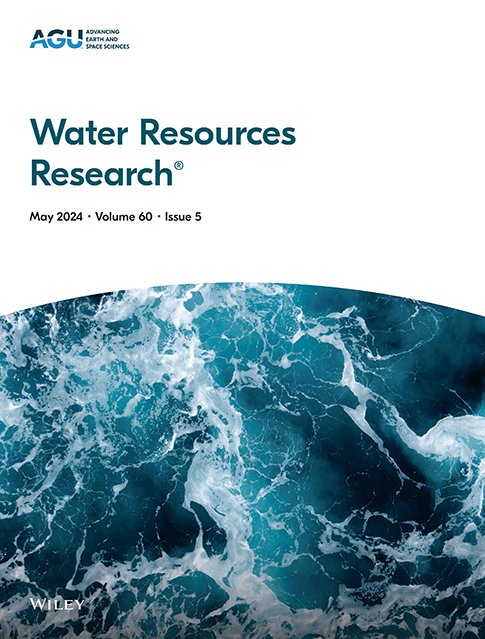深度学习框架下的全球洪水预测及其社会经济影响
IF 4.6
1区 地球科学
Q2 ENVIRONMENTAL SCIENCES
引用次数: 0
摘要
随着地球变暖,洪水等与天气有关的灾害的频率和严重程度正在加剧,对全球各地的社区构成了重大威胁。不断上升的洪峰和洪水量夺去了生命,破坏了基础设施,并影响了人们获得基本服务的机会。然而,全球洪水演变背后的物理机制仍然不确定,其对社会经济系统的影响仍然不清楚。在本研究中,我们利用监督机器学习技术来识别影响日常流量的主要因素。然后,我们开发了一个物理约束的级联模型链,它吸收了水和热传输过程,以预测洪峰和洪量的二元风险,以及其社会经济后果。为了实现这一目标,我们开发了一个混合深度学习-水文模型,其中包含了CMIP6在四种共享社会经济途径下的20个全球气候模型的偏差校正输出。我们的研究结果预测,在中高端排放情景(SSP3-7.0)下,全球大多数集水区的洪水风险将显著增加。未来联合回报周期的中位数从50年减少到27.6年左右,涉及186万亿美元和40亿人。下行短波辐射是驱动日流量变化的主导因素,加速了陆地蒸散发和融雪。随着未来情景预测全球变暖加剧以及极端降水增加,可以预见大范围洪水的风险会增加。本研究旨在为政策制定者提供有价值的见解,以制定积极的战略,以减轻气候变化下河流洪水相关的风险。本文章由计算机程序翻译,如有差异,请以英文原文为准。
Global Flood Projection and Socioeconomic Implications Under a Deep Learning Framework
As the planet warms, the frequency and severity of weather-related hazards such as floods are intensifying, posing substantial threats to communities around the globe. Rising flood peaks and volumes claim lives, damage infrastructure, and compromise access to essential services. However, the physical mechanisms behind global flood evolution are still uncertain, and their implications for socioeconomic systems remain unclear. In this study, we leverage a supervised machine learning technique to identify the dominant factors influencing daily streamflow. We then develop a physics-constrained cascade model chain which assimilates water and heat transport processes to project the bivariate risk of flood peak and volume, along with its socioeconomic consequences. To achieve this, we develop a hybrid deep-learning-hydrological model with bias-corrected outputs from 20 global climate models from CMIP6 under four shared socioeconomic pathways. Our results project considerable increases in flood risk under the medium to high-end emission scenario (SSP3-7.0) over most catchments of the globe. The median future joint return period decreases from 50 years to around 27.6 years, with 186 trillion USD and 4 billion people exposed. Downwelling shortwave radiation is identified as the dominant factor driving changes in daily streamflow, accelerating both terrestrial evapotranspiration and snowmelt. As future scenarios project enhanced global warming along with an increase in precipitation extremes, a heightened risk of widespread flooding is foreseen. This study aims to provide valuable insights for policymakers developing proactive strategies to mitigate the risks associated with river flooding under climate change.
求助全文
通过发布文献求助,成功后即可免费获取论文全文。
去求助
来源期刊

Water Resources Research
环境科学-湖沼学
CiteScore
8.80
自引率
13.00%
发文量
599
审稿时长
3.5 months
期刊介绍:
Water Resources Research (WRR) is an interdisciplinary journal that focuses on hydrology and water resources. It publishes original research in the natural and social sciences of water. It emphasizes the role of water in the Earth system, including physical, chemical, biological, and ecological processes in water resources research and management, including social, policy, and public health implications. It encompasses observational, experimental, theoretical, analytical, numerical, and data-driven approaches that advance the science of water and its management. Submissions are evaluated for their novelty, accuracy, significance, and broader implications of the findings.
 求助内容:
求助内容: 应助结果提醒方式:
应助结果提醒方式:


